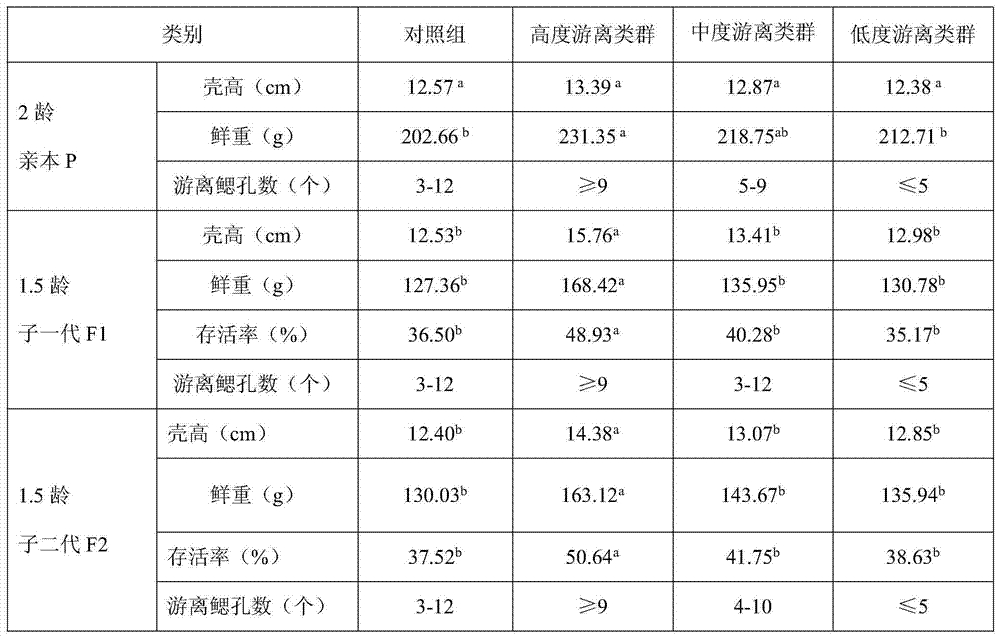Method of producing seeds of Crassostrea hongkongensis by using gill aperture freeness as marker
A Hong Kong oyster and freeness technology, applied in fish farming, application, climate change adaptation, etc., can solve the problems of no high-yield, high-quality and stress-resistant new varieties, etc., and achieve the effect of significant breeding advantages
- Summary
- Abstract
- Description
- Claims
- Application Information
AI Technical Summary
Problems solved by technology
Method used
Image
Examples
Embodiment 1
[0015] (a) Classification: On April 28, 2010, 1,000 wild 2-year-old Hong Kong oysters from Shenzhen were used as the basic population. The right shell of the oyster was opened, and then the top of the shell was gently peeled off with tools such as oyster knives and tweezers. From the mantle between the adductor muscles, four rows of free gill tubes were found in Hong Kong oysters, and the number of free gill openings of each oyster is different, such as figure 2 Individual A has 6 free gill openings, while figure 2 B is a group of oysters that are not free at all (such as near river oysters, long oysters, Portuguese oysters, Kumamoto oysters, etc.). According to the technical route figure 1 , with the number of free gill openings as markers, divide the freeness of gill openings into highly free groups (number of gill openings ≥ 9, figure 2 C), moderately free taxa (5 figure 2 D), low free taxa (number of gill openings ≤ 5, figure 2 E) 3 taxa. In taxa division, the prop...
PUM
 Login to View More
Login to View More Abstract
Description
Claims
Application Information
 Login to View More
Login to View More - R&D
- Intellectual Property
- Life Sciences
- Materials
- Tech Scout
- Unparalleled Data Quality
- Higher Quality Content
- 60% Fewer Hallucinations
Browse by: Latest US Patents, China's latest patents, Technical Efficacy Thesaurus, Application Domain, Technology Topic, Popular Technical Reports.
© 2025 PatSnap. All rights reserved.Legal|Privacy policy|Modern Slavery Act Transparency Statement|Sitemap|About US| Contact US: help@patsnap.com



